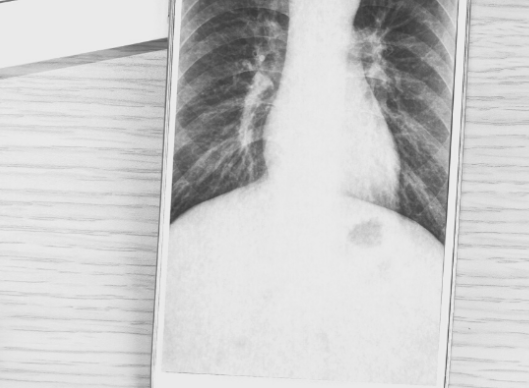
In 2020, hospitals were projected to lose an estimated $323 billion due to implications of the pandemic, leaving nearly half of America’s hospitals and health systems with negative operating margins leading into 2021. A recent report from Kaufman Hall projects that hospitals and health systems could lose an additional $53 to $122 billion in revenue in 2021. There is general consensus about the immense pressure on hospitals and healthcare providers, and no functional area is immune from impact: operations, clinical, admissions, etc. Hospital staff are flooded with tasks like:
Daunting numbers and razor-thin margins have forced health systems to do more with less. Many are finding that adding an automation component to the innovation strategy can be a game-changer by cost-effectively improving operations throughout the organization to the benefit of both staff and patients. Embracing new technologies – such as robotic process automation enabled with chatbots – is key to achieving the interdependent goals of reducing costs and serving patients better.
Managing appointments is one of the more tasking operations in the hospital. Although scheduling systems are in use, many patients still find it difficult to navigate the scheduling systems. Some of the tools lack flexibility and make it impossible for hospitals to hide their backend/internal schedules intended only for staff.
With a messaging interface, the website/app visitors can easily access a chatbot. The chatbot can schedule appointments based on the doctor’s availability. In addition, specific chatbots can be designed to interact with CRM systems like Microsoft Dynamics or Salesforce to help staff track visits and follow-up appointments for a particular patient, while keeping the information handy for future reference. Chatbots may even collect and process co-payments to further streamline the process.
Pre- and post-consults result in a multitude of frequently asked questions/general inquiries about diet, sleep routines, medications, and more. These questions are important, but seldom need input from a busy provider who has many more patients to attend to. “How can I get a prescription?” “How long is someone contagious after a viral infection?” “When is the next vaccination for my 2-year-old baby?” “Is there a specific diet to be followed during my medication period?” “How often should I change my bandages?”
Questions like these are very important, but they may be answered without a specialist. A chatbot is able to walk the patient through post-op procedures, inform him about what to expect, and apprise him when to make contact for medical help. The chatbot also remembers conversations and can report the nature of the patient’s questions to the provider. This type of information is invaluable to the patient and sets-up the provider and patient for a better consultation.
A chatbot trained for FAQs can address these generic patient queries. Because the chatbot is live 24x7x365 on a website, it can address patients’ inquiries at their convenience and, if help is needed, provide a connection to a live agent.
A symptom checker bot, such as Conversa, can be the first line of contact between the patient and a hospital. The chatbot is capable of asking relevant questions and understanding symptoms. The platform automates care along the way by helping to identify high-risk patients and placing them in touch with a healthcare provider via phone call, telehealth, e-visit, or in-person appointment.
During COVID, chatbots aided in patient triage by guiding them to useful information, directing them about how to receive help, and assisting them to find vaccination locations. A chatbot can also help patients to shortlist relevant doctors/physicians and schedule an appointment. This way, no matter the time of the day, the chatbot greets the patient with relevant diagnostic questions in a conversational manner and provides a warm and reassuring customer experience at the beginning of the patient’s journey with the caregiver. With the help of a healthcare chatbot, caregivers can access necessary details beforehand – such as frequency and severity of symptoms – which helps them to gain a better understanding of the patient’s current health situation.
The non-human nature of chatbots provides a sense of security to the user when it comes to the sensitive subjects of mental health and psychological conditions. Chatbots offer a listening nature that has proven to be therapeutic for people in mental distress. The first psychotherapist chatbot, ELIZA, was built on the simple concept of confirming the information communicated by the user. For example, User: “I am feeling down.” ELIZA: “You say you are feeling down? Tell me more about it.” Chatbot technology has evolved considerably since ELIZA, and newer products like Wysa and WoeBot have inked large deals with companies including Aetna. The listening nature of chatbots proves to be therapeutic for people in mental distress. With training using Natural Language Processing (NLP), today’s healthcare chatbots can augment a therapist’s work with context-based responses.
Chatbots can seamlessly help patients keep track of their latest lab results. A chatbot can also assist in locating nearby testing centers or pathology labs, report on the price for various tests, etc. These use cases facilitate easier and faster access to information. Given the sense of urgency associated with medical reports, an instant response by a chatbot can make a world of difference to the provider and the patient, and the patient experience is enhanced while reducing administrative costs.
Reaching beyond the needs of the patients, hospital staff can also benefit from chatbots. Today, care management teams are burdened more than ever. A chatbot can be used for internal record- keeping of hospital equipment like beds, oxygen cylinders, wheelchairs, etc. Whenever team members need to check the availability or the status of equipment, they can simply ask the bot. The bot will then fetch the data from the system, thus making operations information available at a staff member’s fingertips. This automation results in better team coordination while decreasing delays due to interdependence among teams.
Providers can also have access to patient information such as prescribed medication, check-up reports, allergies, scheduled and canceled appointments, etc. This significantly reduces the time healthcare professionals spend searching for updates in the patient information system, and lowers error rates. Why navigate through endless menus, options, and work queues when it is much simpler to ask a chatbot a conversational question: “What are the vitals of Mary Jones?” Because the chatbot understands context, knows who the provider is, and knows the attending physician of Ms. Jones, it can report specific information quickly and accurately.
There are countless opportunities to automate processes and provide real value in healthcare. Offloading simple use cases to chatbots can help healthcare providers focus on treating patients, increasing facetime, and substantially improving the patient experience. It does so efficiently, effectively, and economically by enabling and extending the hours of healthcare into the realm of virtual healthcare. There is a need and desire to advance America’s healthcare system post-pandemic. Change is coming. Healthcare providers should be ready.
If you are considering chatbots and automation as part of your innovation plan, take time to put together a solid strategy and roadmap. If you are new to the process, reach out for help to start on the right path. Element Blue works with leading healthcare providers to deploy chatbots and virtual assistants that assist with medical diagnosis, appointment scheduling, data entry, in-patient and outpatient query address, and automation of patient support.
 Joe Nieto
Joe Nieto
Director of Customer Engagement for Healthcare
Element Blue
The original version of this page was published at: https://elementblue.com/2021/07/21/chatbots-in-healthcare-six-use-cases-part-1-of-a-3-part-series/
Element Blue develops process automation and consumer engagement solutions for clients in Healthcare, Energy and Retail. Our Digital Experience and Robotic Process Automation (RPA) solutions trans... Read more
Companies partner to launch joint practice around optimization of mainframe RPA automationsHouston, Texas, June 2, 2020 – Element Blue, a twenty-year technology consultancy ...read more
PROJECT SCOPESingle Sign-on (SSO) platformMessaging and social collaborationAppointment management functionalityOnline payments and account managementFind a Physician and location ...read more
Here’s how AI is about to revolutionize health care:Overall, patients preferred the chatbot over the physician 79% of the time. This is amazing for a technology that has ...read more
PROJECT SCOPESocial Collaboration for Physicians and healthcare providerMedical Library Search IntegrationFind a Physician and location applicationsPopulation health dashboards and ...read more